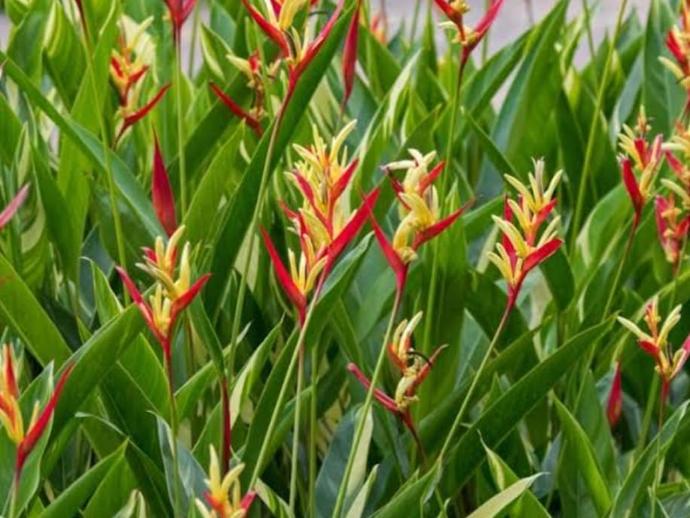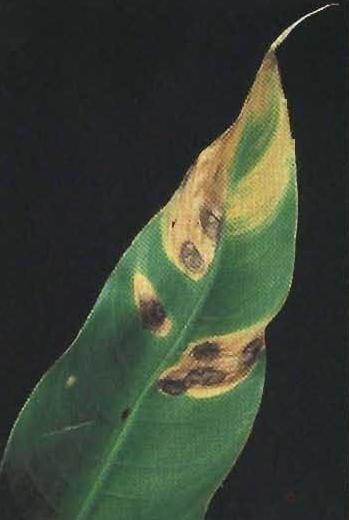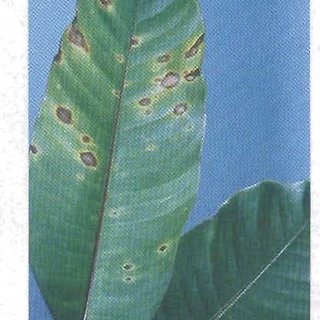Heliconia Dwarf Plant
Heliconia Dwarf, a variety of Heliconia, may have care requirements similar to other Heliconia plants. Plant in well-draining soil with full sun exposure. Water consistently and fertilize during the growing season for optimal flower production. Pruning helps remove old or damaged foliage.

Habit
Perennial
Height
1-2 m
Growth
Moderate
Soil
Well-drained, loamy soil
Shade
Full Sun to partial shade
Moisture
Moist
Edible
No
Medicinal
No
Origin
South America
Climatic Condition
Tropical
Temperature (°)
20-30°CNo
Humidity (%)
60-80%
Potting media
Tropical mix
Fertilizers
Balanced fertilizer
Watering
Water regularly, requires high humidity
Plant Weight
1-2 kg
Flowering Time
Spring to Summer
Soil Ph level
5.5 - 6.5
Water Ph level
6.0 - 7.0
Soil EC
1.2 dS/m
Yield Per Plant
50-70 flowers
NPK ratio
10:10:10
life Span
Perennial
Health Benefits
Used in floral arrangements, decorative plant.
Suggested Grow Media or Potting Mix ?
50% peat, 25% compost, 25% sand
Suggested Fertigation/Fertilizers
Fertilize every 2-3 weeks with a balanced fertilizer.
Common Diseases and Remedies
Leaf Spot , Leaf Blight.
Di-sorted leaves , Yellowed edges , Leaf Drop , Reddish brown spots on leaves , twisted leaves.
Avoid excess watering , Remove effected leaves .
HEALTH BENEFITS
· These are mainly ornamental plants and not widely known for medicinal benefits.
· Some indigenous communities use parts of Heliconia species for wound healing and anti-inflammatory effects.
What Is A Heliconia Dwarf Tree?
Heliconia stricta 'Dwarf Jamaican', also known as Heliconia stricta 'Dwarf Jamaican', is a variety of Heliconia cultivated in America. It usually grows to 2 to 3 feet tall and bears vibrant, colorful flowers in red, orange and yellow. Often grown for their unusual leaves and flowers, these plants are frequently used as gardens in tropical regions or suitable areas. small cultivar of Heliconia, a flowering plant native to the United States. Unlike the larger Heliconia, the dwarf Jamaican Heliconia variety usually reaches heights of 2 to 3 feet, making it suitable for small spaces and containers. It has vibrant red, orange and yellow flowers that add a warm atmosphere to any landscape or interior. The dwarf plant is prized for its unusual foliage and blooming flowers, making it a popular choice for tropical gardens and indoor climates.

What Are The Different of Heliconia Dwarf Plants?
There are many varieties of Heliconia dwarf plants, each with its own unique characteristics. Some popular types include:
1. Heliconia stricta 'Dwarf Jamaican':-
This variety is known for its size, often reaching heights of 2 to 3 feet. It has red, orange or yellow flowers and is perfect for a small garden or container.
2. Heliconia angusta 'Red Christmas':-
Also called "Red Christmas," this variety is prized for its red and green bracts that resemble holiday colors. It usually grows to medium size and is often used in landscaping.
3. Heliconia psittacorum "Dwarf Parrot":-
The "Dwarf Parrot" variety is characterized by its size and characteristic green and yellow flowers. It is a compact, bushy plant that adds color to the garden and indoor spaces.
4. Heliconia stricta 'Sharonii':-
'Sharonii' has elegant upright flower clusters with yellow and green bracts. It is a compact variety suitable for small gardens or as a focal point in landscaping.
5. Heliconia stricta 'Mini Red':-
As the name suggests, 'Mini Red' is a dwarf variety known for its petite size and bright red flowers. Perfect for adding color to a small garden area or as a focal point in a warm space.
![]()
How to care for Heliconia dwarf plants?
1.Location:-
When choosing a location for your dwarf plants, choose a location that receives direct, indirect sunlight. This mimics its habitat under the tropical forest, where it filters light. Do not expose to direct sunlight as this may cause the leaves to burn. Also make sure the area has enough room for the plants to grow to their maximum height without crowding them. If you're growing indoors, consider placing it near a window to get enough light or supplement lighting if necessary. Providing good lighting is crucial to the overall health and growth of your plants.
2.Sun light:-
Heliconia dwarf plants thrive in bright, indirect sunlight. Place them where they will receive at least 6-8 hours of indirect sunlight per day. Direct sunlight, especially evening sun, can burn leaves. If growing indoors, place the plant near a window so it receives light, filtered water daily. Adequate sunlight is essential for the healthy growth and flowering of dwarf henbane plants.
3.Soil:-
Use a well-drained, rich soil mix for Dwarf Heirloom plants. A good option is a mixture of equal parts soil, perlite or sand with organic matter such as compost or aged manure. This type of mixed soil provides necessary drainage while retaining moisture and nutrients essential for plant growth. Avoid heavy clay that retains water as it can cause root rot. Also, make sure the pH of the soil is slightly acidic to neutral, preferably between 5.5 and 7.0, as henbane plants like things slightly acidic. When planting or repotting. Heliconia dwarf plants, make sure the root ball is well covered with soil and gently compact the soil around the roots for stability. Check soil moisture regularly and adjust watering frequency as needed to ensure soil remains moist but not waterlogged.
4.Hydration:-
Irrigation is essential for the development of dwarf plants. They like normal soil but it is important not to overwater, which can cause root rot. Water your plants regularly, making sure the soil is evenly distributed but not waterlogged. Allow the topsoil to dry slightly from water. Adjust watering frequency according to conditions such as temperature and humidity. Also make sure the water is well watered to avoid stagnation, as excess moisture at the roots can be a problem for the plant.
![]()
5.Nourishment:-
Heliconia dwarf plants need proper nutrition. Use a balanced fertilizer that contains equal amounts of nitrogen, phosphorus and potassium, such as a 10-10-10 formula. Apply fertilizer every 2-3 months during the growing season, avoiding direct contact with the leaves to prevent burning. Water thoroughly after fertilizing to help distribute nutrients in the soil. This feeding promotes good growth and beautiful flowers of Heliconia dwarf plants.
6.Issues:-
Common issues with Heliconia dwarf plants include , Causes root rot and other fungal diseases. Be sure to water thoroughly and allow the soil to dry out a bit from the water , Causes wilting and growth arrest. Water regularly, especially during dry periods, but do not waterlogged the soil , Aphids, mites and insects can attack Heliconia plants and damage leaves and flowers. Use insecticidal soap or neem oil to control pests, Symptoms include yellowing of leaves, poor growth and reduced flowers. Use a balanced fertilizer to provide essential nutrients for a period of time, Heliconia dwarf plants love hot weather. Do not place them in temperatures above 10°C (50°F) and protect them from cold weather.
What are the benefits of Helia dwarf plants?
Benefits of Helia dwarf plants include:
1. Ornamental value
2. Low maintenance
3. Enjoy wildlife
4. Long-lasting flowers
5. Versatility
6. Stunning beauty
7. Low Maintenance
8. Enjoy wildlife
9. Long-term flowering
![]()
FAQ’s about growing Heliconia Dwarf Plants
1. What is the best soil type for Helia dwarf plants?
Heliconia Dwarf plants thrive in well-drained, rich soil. A suitable soil mix for dwarf plants consists of a mixture of potting soil, perlite or sand (to improve drainage) and organic matter (such as compost or aged manure) to provide necessary nutrients. Since the henbane plant likes to be slightly acidic, it is important to ensure that the pH of the soil is slightly acidic to neutral, preferably between 5.5 and 7.0. Avoid heavy clay that retains water as it can cause root rot. Providing the right type of soil will help support root development and that all-important plant growth.
2. Do Heliconia dwarf plants need fertilizer? If necessary, how much fertilizer should be used?
Yes, Heliconia dwarf plants benefit from regular watering to stimulate their growth and flowering. Use a balanced fertilizer that contains equal amounts of nitrogen, phosphorus and potassium, such as a 10-10-10 formula. Apply fertilizer every 2-3 months during the growing season, which generally corresponds to the warmer months during plant growth. The manufacturer's instructions regarding application and procedure should be followed. Avoid fertilizing too much as this will damage plants by causing nutrient deficiencies or salt build-up in the soil. Also, do not fertilize while the plant is dormant, usually during the cold months when growth is slow. Regular, moderate fertilization will help your dwarf plants grow healthy and have vibrant flowers.
3. What are the techniques that encourage flowering of Helia dwarf plants?
To encourage flowering of Dwarf Heliconia plants, consider the following tips:
1. Full Sun
2. Water properly
3. Balanced fertilisation
4. Prunes
5. Temperature and humidity
6. Pest Management
4. Do I need to do any special pruning or maintenance to keep my dwarf plants healthy?
To keep your dwarf plants healthy, consider the following pruning and maintenance tasks:
1. Remove dead or damaged leaves
2. Pruning the flower stalks
3. Control overcrowding
4. Division
5. Pest Control
6. Provide support
5. Where can I buy Heliconia dwarf plants or seeds?
You can purchase Heliconia dwarf plants or seeds from many places, including:
1. Local nurseries
2. Online Stores



